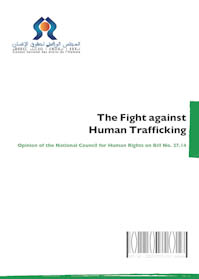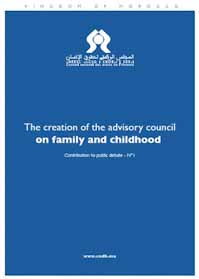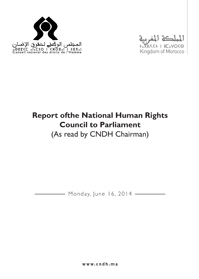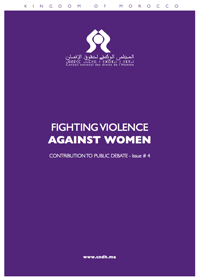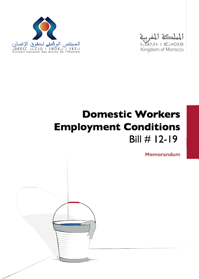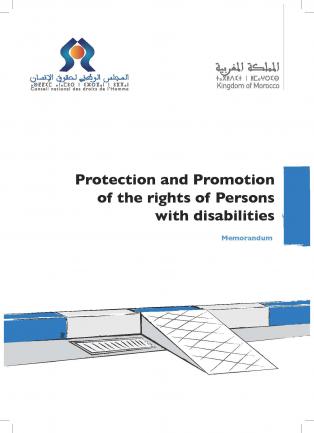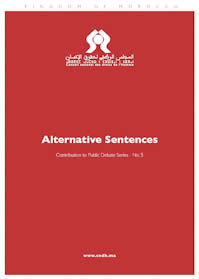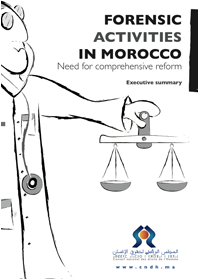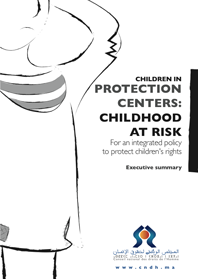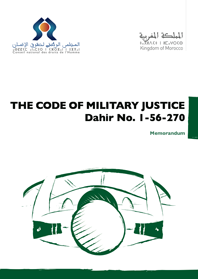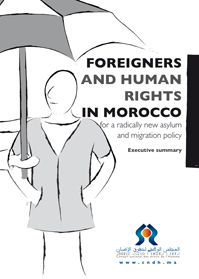STUDY ON THE ADOPTION OF A REDRESS MECHANISM AND FOLLOW UP OF CHILDREN'S RIGHTS IN MOROCCO
1. Background
The study on the adoption of a redress mechanism and follow up of children's rights in Morocco is initiated by the Advisory Council on Human Rights (CCDH) in collaboration with the United Nations Children’s Fund (UNICEF) and support of the International Organization of the Francophonie (OIF). The choice of this topic is related to several concerns, including:
- the promotion of the rights of the child in a country where children under 18 represent 36.3% of the population;
- the implementation of the recommendations of the Committee on the Rights of the Child, in particular general recommendation # 2, in order to ensure best implementation of the Convention on the Rights of the Child;
- the observations and recommendations of the Committee on the Rights of the Child on the second periodic report submitted by Morocco;
- the implementation of the recommendations of the UN study on violence against children;
- the conclusions and recommendations of some studies and researches carried out at the national level which highlighted the ignorance and inadequacy of the available redress mechanisms and its inefficiency in cases of violations of child rights;
- the recommendations of the international seminar held on 10 December 2009 on "redress mechanisms for children victims of rights violations", to mark the 20th anniversary of the Convention on the Rights of the Child and the 61st anniversary of the Universal Declaration of Human Rights.
In line with its mission, namely the preparation of studies and advisory opinions, the Advisory Council on Human Rights conducted this study to promote human rights and ensure best adoption of their values and principles.
2. Objectives
This study is a working basis for sustaining the process of reflection to provide Morocco with an independent redress mechanism to protect children’s rights in accordance with the recommendations of the international seminar held on 10 December 2009 by the Council, in cooperation with the United Nations Children’s Fund. The Council and the Fund had many consultation meetings on the subject in 2004.
The study aims to present the international normative framework adopted in the field, on the basis of some experiences. It examines national mechanisms for the promotion and protection of children’s rights and suggests models that can be implemented in Morocco.
3. Methodology
The study adopts a qualitative methodology, based on a literature review of the:
- Convention on the Rights of the Child;
- General and specific recommendations of the Committee on the Rights of the Child;
- Reports and studies.
Interviews were made with governmental and nongovernmental stakeholders.
As stipulated in the Convention on the Rights of the Child and general observation # 2 of the Committee of Human Rights, which recommend the creation of a redress mechanism following a participatory and transparent process, the study gave a particular importance to the direct participation of children. Children were invited to express their views through seven focus groups, conducted in compliance with the applicable ethics; using tools and means they can easily grasp and follow. 63 children, 8 to15 years old, were consulted (32 girls and 31 boys).
Attention was particularly given to children living in difficult circumstances: street children, working children (housemaids), children in conflict with the law and unaccompanied children from sub-Saharan Africa. Similarly, a focus group was held with the child parliamentarians. The organization of these focus groups was made possible through the contributions of the educators of Bayti.
The study considered three aspects, namely:
- the international legal framework governing independent redress mechanisms for children victims of rights violations;
- the national aspect relative to the mechanisms of protection and promotion of the rights of the child;
- models for a national redress mechanism and following up the implementation of children's rights in Morocco.
4. Concepts
It is pertinent to define the concepts covered by this study:
Child: every human being below the age of 18, as laid down in article 1 of the Convention on the Rights of the Child.
Violation of children’s rights: means that one or more children’s rights, guaranteed by the Convention on the Rights of the Child, its Optional Protocols and other international human rights instruments, are not violated, regardless the reason (political, administrative, etc.). Children’s rights cover civil, political, economic, social and cultural rights. In addition, the Convention on the Rights of the Child recognizes other children’s specific rights: the right to life, the right to survive, the right to protection and the right to participation, etc.
Redress mechanism: aims at the effective implementation of rights, through an independent national institution for the protection and promotion of children’s rights. The general guidelines of the Committee on the Rights of the Child related to the preparation of periodic reports calls expressly States to provide information on any independent body created to promote and protect children's rights. States parties to the Convention on the Rights of the Child undertake upon the ratification of the Convention to ensure the implementation of the Convention and the universal rights of the child. National independent institutions for the promotion and protection of children’s rights can be national independent human rights institutions, ombudsmen, commissioners for children or independent similar bodies in charge of strengthening and monitoring the implementation of the Convention.
5. Summary of the study
The Advisory Council on Human Rights (CCDH) and the United Nations Children’s Fund (UNICEF) launched a reflection process on the possibility of establishing a national redress mechanism for children victims of rights violation. This initiative is in line with their efforts to promote the rights of the child. The two institutions signed a memorandum of understanding signed on 10 December 2009. This reflection process is supported by the International Organization of the Francophonie (OIF).
It takes into account the recommendations of the Committee on the Rights of the Child (2003).
The Council and Fund organized an international seminar to open discussion on the subject in December 2009, in commemoration of the 20th anniversary of the Convention on the Rights of the Child and the 61st anniversary of the Universal Declaration of Human Rights.
Conducted with the participation of the UNICEF and the Innocenti Research Centre in Florence and a national expert, this study aims to deepen this discussion.
It was prepared on the basis of a review of available documents, interviews with governmental and non-governmental stakeholders and focus groups with children.
The study of the international normative framework helped identify the international regulations and instruments governing redress mechanisms for children victims of rights violations: the Convention on the Rights of the Child, the general recommendations of the Committee on the Rights of the Child (N 2 and 5) which harmonized the Convention and the Paris Principles governing national human rights institutions.
Redress mechanisms must be accessible and have a total independence and broad mandate. They should be able to examine violations and react automatically and play a proactive role. Their confidentiality should be protected. They should have adequate human and financial resources.
The review of foreign experiences shows that there is no single model in the field. Redress mechanisms may take different forms. The best choice must be made, therefore, following a wide consultation and discussion, taking into consideration the political and social environment and the opportunities available at the national level.
The examination of the existing national mechanisms for the protection of children’s rights indicates that:
- there is a political will and a national concern to promote children’s rights;
- there is a multiplicity of governmental and non-governmental mechanisms and national institutions;
- most of the existing mechanisms are dedicated mainly to the right to protection;
- several efforts have been wasted because of weak or absent replication of good initiatives;
- the existing mechanisms are not widely known;
- there is a lack in the field of information and communication;
- stakeholders, children and families are not concerned by the rights of the child as they should;
- the sectoral approach in the field of children’s rights predominates, despite the existence of a National Plan of Action for Children 2006-2015: "A Morocco worthy of its children";
- the financial and human resources are inadequate;
- the initiatives taken and the existing mechanisms are not strong enough which affects the promotion and safeguarding of the rights of the child, etc..
The Advisory Council on Human Rights and Diwan Al Madalim (ombudsman) are the only national institutions in compliance with the Paris Principles.
The study suggests three options:
- create a national redress mechanism within an existing structure. CCDH and Diwan Al Mdalim may house this national mechanism. This mechanism should have a specific mandate, be independent and accessible. CCDH mandate may be a good advantage in this regard.
- create a national mechanism within the National Observatory for Children’s Rights. In this case, the Observatory’s status should be reviewed and a new law should be adopted to guarantee its administrative and financial independence, identify its mandate and determine how the person or committee in charge should be appointed, etc.
- create an independent redress mechanism dedicated specifically to the protection of children’s rights. It should be in compliance with the Paris Principles as were adapted by the CRC in its general recommendation No. 2. The creation of this independent mechanism may take longer time.
Anyway, this national redress mechanism should have local and accessible representative bodies.





